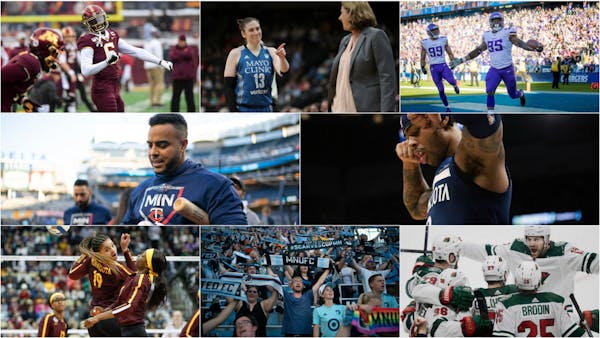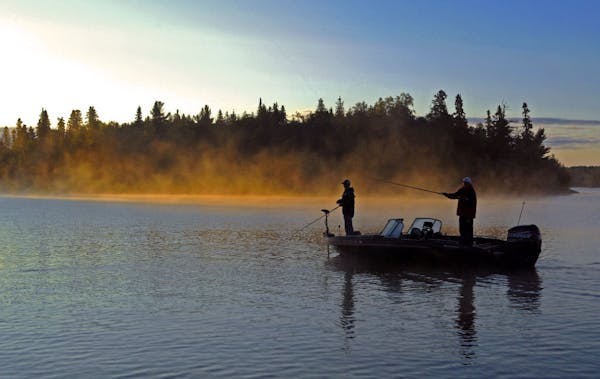Dave Nomsen, 65, of Alexandria, Minn., recently ended a 28-year career with Pheasants Forever (PF), the past 25 years as the group's vice president of governmental affairs. Previously he worked for the National Wildlife Federation and taught at South Dakota State. His primary work for PF occurred in Washington, D.C., where he interacted with administration policymakers and members of Congress and where he was respected as a conservation policy expert. In the interview below, Nomsen discussed Washington's political climate and the challenges of advocating for conservation policy on a national scale.
Q: Twenty or more conservation groups have policy advocates in Washington today, far more than when you first went there in the mid-1990s.
A: Ducks Unlimited had staff there at the time, as did the National Wildlife Federation, the Association of Fish and Wildlife Agencies and the Wildlife Management Institute. There were others but not many. By contrast, the last time I testified in Washington, I did so on behalf of 45 groups.
Q: Congressional members and staff are bombarded with messages, requests and demands. How do you break through with a conservation message?
A: Relationships are critical, without which you don't make much progress. One example is Minnesota Rep. Collin Peterson. I and the conservation community in general had a good relationship with him over many years, and still do. Without him, I doubt there would be a Conservation Reserve Program [CRP] today in the federal Farm Bill.
Q: Yet it seems conservation loses more often than it wins, especially in Washington.
A: True. But you have to continue to tell your story, and conservation is a fact-based, science-based story. We also benefit by conveying from our staff and members what congressional members, their staff and administration staff often don't know — specifically, how things actually work out here on the land. PF farm-program professionals know, for instance, which policies benefit both farmers and natural resources and which are less effective. Communicating that to decisionmakers is the challenge.
Q: Who opposes conservation in Washington?
A: Large agribusinesses traditionally have been opposed to CRP, as just one example, or would like to modify it. Also, there are interests that make money storing and moving grain, and the more they have to store and move, the more money they make. Export markets also come into play. How conservation fits into all of this is complicated but increasingly important. In the years ahead, for example, we need to consider the effects of climate change on agriculture. To sustain our growing ability, we will have to invest more in conservation than we have. There's nothing better than trees and grasses for sequestering carbon.
Q: Lobbyists representing the agricultural interests you cite are fully staffed and obviously very effective. Are they tough to compete against?
A: Routinely, when I testified on behalf of a conservation measure, I'd have lobbyists sitting next to me who opposed me. That's the process, and to succeed you need to be professional and cordial but persistent. Sustaining our ability to produce enough food for everyone while conserving not only soil and water but our quality of life is worth fighting for. One example is pollinators, which are critical to food production but whose habitat has been dramatically reduced. The same habitat that produces pollinators produces songbirds, pheasants and, in many cases, ducks. The goal is to get more Americans to appreciate this, whether they hunt or are only interested in a sustainable food supply, thus turning the tide more in favor of conservation.
Q: Does the grassroots nature of groups such as Ducks Unlimited, the National Wild Turkey Federation and Pheasants Forever, among others, help make them effective in D.C., given that they have hundreds of thousands of members nationwide?
A: The ability to get things done in Washington often is tied directly to a group's members and their local chapters, each of which has a local member of Congress who often attends their annual fundraising banquets. Face-to-face interactions like those are critical.
Q: The U.S. House Wednesday passed 310-107 a bill to fully fund at $900 million annually the Land and Water Conservation Fund [LWCF], while also providing $1.9 billion annually for five years to address maintenance backlogs at national parks, among other goals. Given the nation's political climate, passage was quite an achievement.
A: It's been a long time coming, given that the LWCF was established in 1965 and that conservation received its full $900 million annual funding only twice in the years since. But its passage, which the Senate earlier had overwhelmingly approved, demonstrates what can happen when conservation issues are addressed in a bipartisan way. It's a great victory for the nation and for Minnesota. The bill has been a priority for the Trump administration.
Q: In the end, ironically, it might be agricultural scientists who advance farmland conservation by developing new crops that enhance soil and water health, rather than detract from it.
A: If on a landscape scale, improvements can be made to crops and rotations, improvements will follow to fish, soil and wildlife. But conservation proponents need to be at the table as these changes occur. We need to help turn the rudder toward improved conservation, not wait for it to turn and try to catch up.
dennis.anderson@startribune.com

Anderson: Chiovitte's state record walleye shouldn't be thrown back

Anderson: Minnesota's muskies are no match for sonar gadget

Anderson: Anatomy of a nighttime helicopter rescue in Boundary Waters

Anderson: With summer training, know a dog's tail is meant to wag




